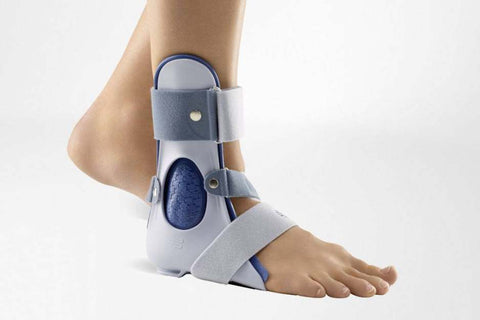Ehlers-Danlos Sydrome
EDS affects at least one in 5,000 people, although that is considered by many to be conservative, with clinical studies showing it may be much more common.
Within the wide range of sub-types, many people with the syndrome share a group of common symptoms such as chronic pain, skin sensitivity, hyperextension, dislocation and joint instability.
Each person with EDS is unique in their symptoms and treatment, and while it’s important to work alongside your healthcare team for the long-term management of your condition, there are some simple ways to easily get on top of the more common symptoms of EDS to get back doing the things you love.
1. Wearing a brace or support
Chronic pain is one of the symptoms of EDS and for many sufferers, it means they have trouble completing simple daily tasks. For the most part, this pain comes from hypermobile joints that dislocate and hyperextend during the day.
The pain can often lead to a reluctance to engage in physical activity and can have a compounding effect on lifestyle factors, leading to a cycle of pain and frustration.
By wearing a rigid or semi-rigid support or brace, you can provide physical support to the joints and minimise the risk of hypermobility.
To find a support or brace, try: Shop by Body Part
Rigid support
Rigid braces are the highest level of support you can get for your ankle. Utilising a rigid splint to keep your ankle in a particular position, they’re most often fastened with strapping and use padding, air cushions and inserts to keep the joint supported.
When it comes to the ankle, this type of brace is most commonly used for chronic instability, severe injury and post-op recovery. Often, rigid braces are the best chance people have of being able to walk with a severe ankle injury.
Example: CaligaLoc Ankle Brace
Semi-rigid support
Semi-rigid braces are designed to provide support post-injury. The unique design allows for the brace to stabilise the ankle, while still allowing active movement.
Using the ankle as an example again, these braces often have multiple components to suit various stages of rehabilitation from an ankle injury. This helps patients to transition through their recovery with the one brace. These braces are highly versatile and great for multiple issues, such as swelling and instability, fractures and post-op recovery.
Example: MalleoLoc L3 Ankle Brace
A brace on the affected joint helps to promote regular and consistent movement, as well as reduce the risk of injury, but it has also been shown to reduce the symptoms of chronic pain caused by EDS.
2. Physical therapy
Joint hyper-mobility or instability is one of the most frustrating and painful symptoms of EDS. Unfortunately, there’s no medical treatment to restore the joint properly.
However, targeted physiotherapy, strengthening and exercises can all be practised to help strengthen the larger muscles around the affected joints to reduce the risk of dislocation, and provide stability.
By regularly exercising and strengthening the muscles around the joints in your ankles, knees, back, elbows and wrists, you give your body the best chance at combatting the more common symptoms of EDS.






















